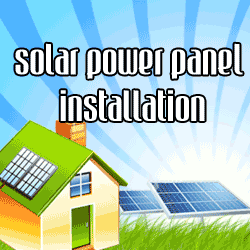is one integral - but often overlooked - concept in both standard architectural design and
. Natural lighting is an appealing design statement because it is naturally lovely. It also is significantly more energy efficient because it reduces dependence on artificial light for most of the day.
The key to incorporating natural light is in providing brightness while managing glare - and that's where retractable awnings can be a crucial design element.
The Importance of Lighting in Architecture Lighting is an incredibly important method to highlight the mood and functionality of a space. In traditional architecture, natural lighting creates a specific mood to enhance comfort. Nowadays, sustainable design is introducing a complementary feature: to save energy.
One architectural book defines the patterns of light and dark as a "tapestry" that balances the room. Light highlights functional areas; it establishes and smoothes visual contrasts. Effective lighting strategies blend color, contrast, and shadows, which makes the variability of natural light attractive. The uniformity of artificial light can't bring the same delicate touch.
Additionally, artificial light isn't necessary. There is a giant (and electricity-free) light source right in the sky. Sustainable designs - called daylighting - use sunlight as an interior light source to cut down electricity usage. Because this is so energy-efficient, daylighting is a highly desirable component energy efficiency programs, even recognized by
LEED certifications.
The key is to make the lighting scheme effective, so natural lighting has to: $ Mitigate heat gain. Too much heat, and air conditioning use becomes an energy issue. $ Control glare and UV rays. Direct sunlight can cause problems with normal tasks (reading or working at a computer). $ Optimize light. Sunlight can be a good thing, not just a thing. Good lighting creates a feeling of warmth, comfort, and well-being, as well as reduces headaches and eye strain.
Where Retractable Awnings Fit In The key to natural light is controlling that light, and that's where retractable awnings are a vital design concept.
Retractable awnings have long been incorporated in traditional architecture to produce translucent shading - in other words, diffuse natural light. As part of a lighting scheme, retractable awnings bring two important advantages: $ The fabrics of these awnings softly diffuse light, producing the warmth of the color reflecting from the fabric. $ The exterior shade from retractable awnings reduces glare and prevents UV rays from entering a room.
Retractable awnings enhance
sustainable lighting design, as well, through better efficiency than windows, window tinting, blinds and shades, or fixed awnings: $ Retractable awnings reduce summer heat gain by blocking sunlight during hot, long-light months. This reduces heat gain by as much as 77% (up to 20 degrees) and cuts air conditioning use by 25%. $ Retractable awnings allow winter heat gain. This is incredibly important. Sunlight is crucial to providing natural heat during autumn and winter. Cutting off sunlight permanently through fixed awnings or heavy window treatments actually increases energy use in winter months - more than it saves in summer.
Designing with Retractable Awnings Design isn't a product. Design is a plan. Retractable awnings can enhance the lighting of a room or save money simply by being installed. But you can really maximize your investment and get truly spectacular results with a little bit of planning.
First and most important, look at the fabric. High-quality retractable awnings (even in budget lines) use solution-dyed acrylic. It's a durable, stain-resistant, fade-resistant fabric with excellent color quality. Even better, it's approved by the American Skin Cancer Association for its UV protection. Because solution-dyed acrylic is synthetic, it is available in an astonishing array of colors and patterns. For maximum impact on natural lighting designs, consider retractable awnings fabrics in warm, honey-colored tones like dark yellows, beige, orange, or cream. That palette provides very soft color that reduces glare while still being bright and cheerful.
Another major factor are accessories for the retractable awning. Motors are a cinch; motorized retractable awnings are used four times more often than manual retractable awnings according to industry research. Other features like remote controls or switches allow awnings to be installed in otherwise inaccessible areas - over extremely high windows, sides of buildings, or over walkways - and be opened and closed easily. Other features like timers, wind sensors, and rain sensors can protect the retractable awning in threatening weather (and times with lowlight, when any natural light should be maximized).
And always remember to look at the frame. Almost all of the function of a retractable awning comes from what it offers indoors (light control, energy efficiency) but its beauty comes from how it looks outside. There are many frame styles, and high-end assemblers can custom-size retractable awnings to the inch. Plan where you need an awning based on your lighting and energy needs inside - but match the style to the outside for the best curb appeal.
About the Author:
Retractable Awnings offers afforable high quality awnings, which are durable and easy to install.
http://www.retractableawnings.com/





